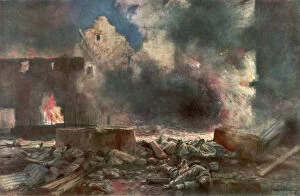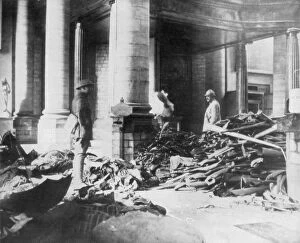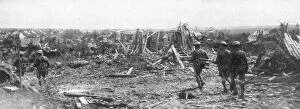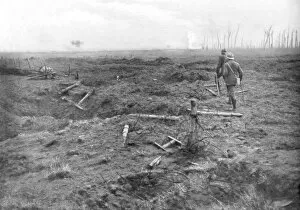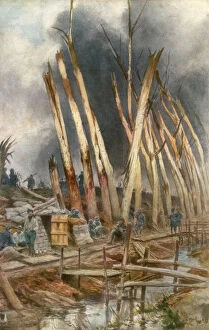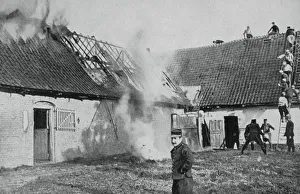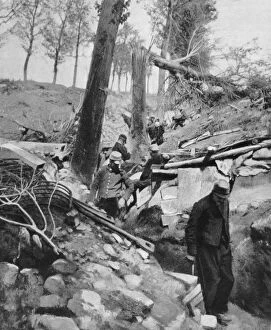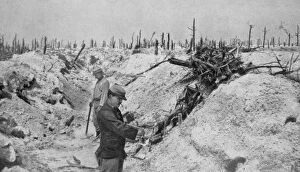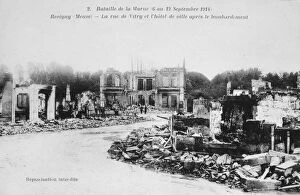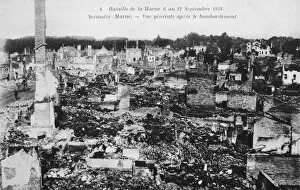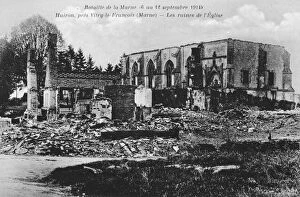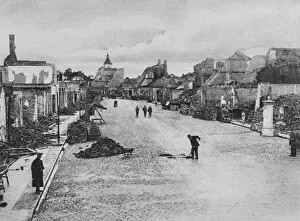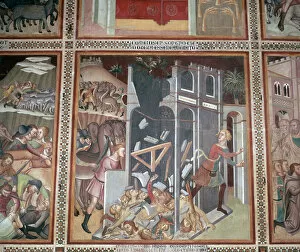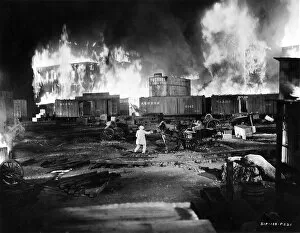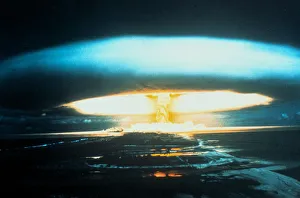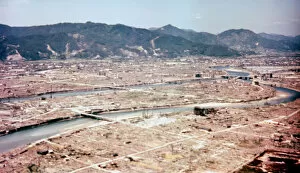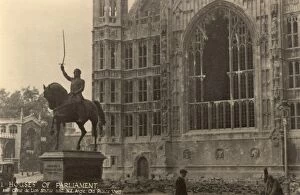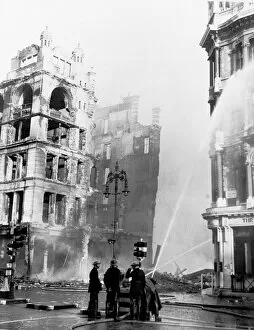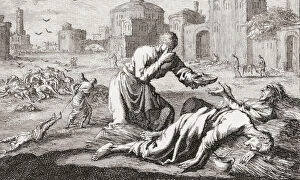Devastation Collection (page 17)
"Unveiling the Scars of Devastation: A Glimpse into History's Darkest Hours" Witnessing the aftermath of destruction
All Professionally Made to Order for Quick Shipping
"Unveiling the Scars of Devastation: A Glimpse into History's Darkest Hours" Witnessing the aftermath of destruction, Brampton Road in Bexleyheath bears the haunting marks of bomb damage during World War II, a stark reminder of the horrors endured. Kilgour Road in Southeast London stands as a testament to resilience amidst devastation, its scars serving as silent reminders of the relentless bombings that ravaged this area during WWII. Amidst the chaos and ruins caused by Blitz bombings in London, an extraordinary sight unfolds - a chef fearlessly cooking amidst a bombed-out street, symbolizing unwavering determination even in times of despair. In an unexpected encounter on the road to Lille during WWI, a British trooper finds solace and hope as he meets a French woman amidst scenes of utter devastation, reminding us that humanity can still thrive amid adversity. The scene after a flying bomb attack leaves behind nothing but desolation; it serves as an indelible image etched into our collective memory from WWII – reminding us never to forget those who suffered through such devastating times. Hackney Wick's Clarnico Factory becomes an emblematic representation of wartime destruction during London's Blitz – its shattered walls standing tall against all odds while bearing witness to unimaginable devastation. Foreign Street in Camberwell tells tales untold through its crumbling facades and broken windows – remnants left behind by bombs dropped mercilessly upon this neighborhood during WWII’s darkest days. Once majestic and grandiose, Hollebeke's White Chateau now lies in ruins after being reduced to rubble during WWI; its shattered beauty serves as both a poignant reminder and warning against war’s destructive power. Adolf Hitler's brush captures not only his artistic talent but also reveals glimpses into his twisted mind.

